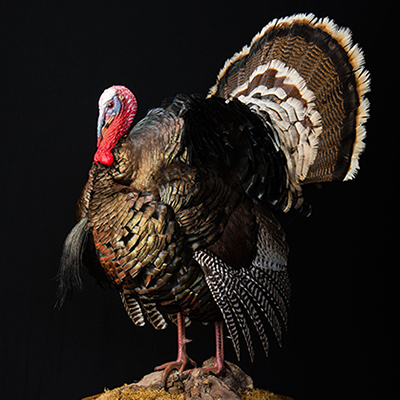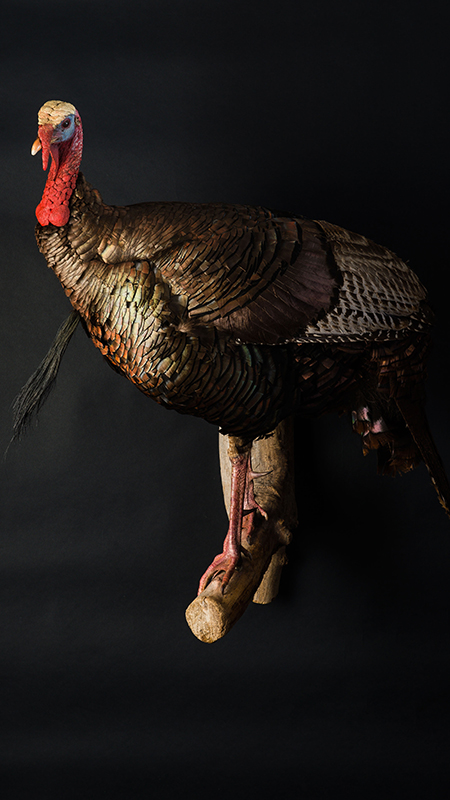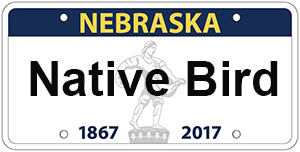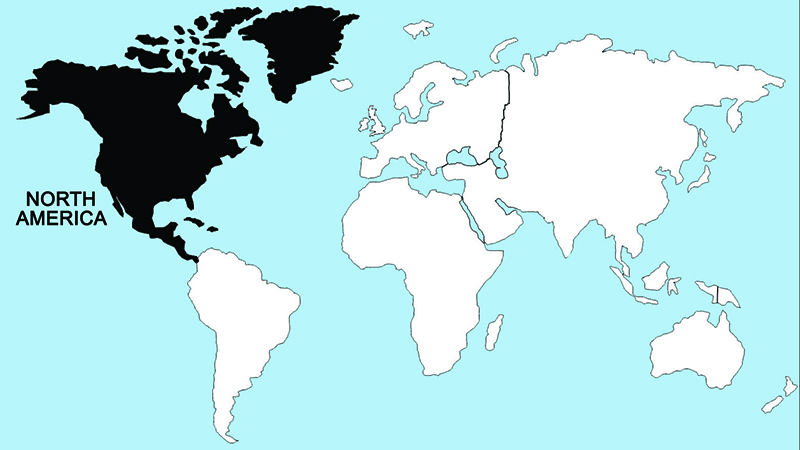Wild Turkey

The several races of wild turkeys native to the United States occupy habitats that range from the wooded swamps of the eastern and southeastern states to the sparsely wooded flatlands and river bottoms of the southern Great Plains and the coniferous forests of the western mountains. In the eastern states, acorns and other nuts are major foods, but turkeys will also eat buds in the manner of grouse. In the Southwest, grasses and seeds are a more important part of the diet than is mast. During the summer, insects, and especially grasshoppers, are regularly eaten by young turkeys and to some extent also by adults. Open hardwood forests containing mature nut-bearing trees such as oaks are preferred by the eastern race (sylvestris). The Merriam race (merriami) of the western states is most often associated with ponderosa or subalpine pines, aridadapted oaks, junipers, running water, and a rugged topography. The Rio Grande race (intermedia) of the Southwest is typically found in more arid and grass-dominated habitats. The Osceola race (osceola) is limited to the swamplands of southern Florida. The Gould’s turkey (mexicana) is native to Arizona, New Mexico and northern Mexico.
The elaborate and familiar strutting displays of the domestic turkey provide a good idea of the social behavior patterns of wild turkeys, which are polygamous. In late winter the flocks of adult males begin to break up, and the "gobbling" season begins. Gobbling males tend to avoid one another, and by their calls and strutting postures attract adult females. Several rival males may occupy display areas or "strutting grounds," but these birds are usually separated by several hundred yards. A harem of about 5–6 females, rarely as many as 14, is gradually formed.
Females select nesting sites that are located near the strutting ground as well as close to a source of water. The nest is normally well concealed by low vegetation and also situated so as to have at least one ready escape route. Eggs are laid at the average rate of two every three days, and a clutch of 10–13 is typical. Incubation requires about 28 days, and is entirely done by the female, who also undertakes the care of the young. Within a week the chicks are able to make short flights and soon begin to roost in trees. Sometimes two or more hens with broods will join company, and these groups are likely to remain intact until the next breeding season.

Regions Birds Are Found


Collection Location & Year
Mexico 2001
Taxonomy
| Order | Galliformes |
|---|---|
| Family | Phasianidae |
| Sub Family | Meleagridinae |
| Species | Meleagris |
| Genus | gallopavo |
Gender
Male
References
- Johnsgard, P. A. 1975b. Waterfowl of North America. Bloomington, IN: Indiana Univ. Press.
- del Hoyo, J. A. Elliot, and J. Sargatal, eds. 1994. Handbook of Birds of the World. Vol. 2 (New World Vultures to Guineafowl). Barcelona, Spain: Lynx Editions.